Complete Solutions to TEXTUAL EXAMPLES of chapter TRIANGLES of Class 10 book with complete answers and questions
| Class 10 | MATHS |
| Chapter | TRIANGLES |
| KUMAR PRAKASHAN | TEXTUAL EXAMPLES |
| Number Of Questions | 16 |
| Academic Year | 2023-24 |
If a line intersects sides AB and AC of a `triangleABC` at D and E respectively and is parallel to BC, prove that `(AD)/(AB)=(AE)/(AC)` (see the given figure).
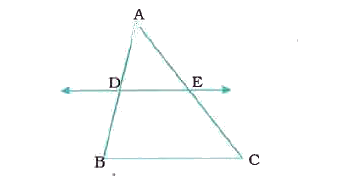
View SolutionABCD is a trapezium with `AB||DC`. E and F are points on non-parallel sides Ad and BC respectively such that EF is parallel to AB (see the given figure). Show that `(AE)/(ED)=(BF)/(FC)`.
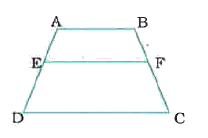
View SolutionIn the given figures `(PS)/(SQ)=(PT)/(TR)` and `/_PST= /_PRQ`. Prove that `trianglePQR` is an isosceles triangles.
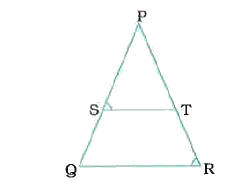 .
.
View SolutionIn the given figure, if `PQ||RS`, prove that `DeltaPOQ ~ DeltaSOR`.
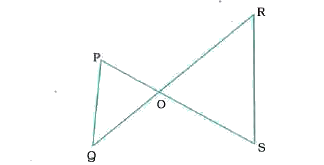
View SolutionObserve the given figure and then find `/_P`.
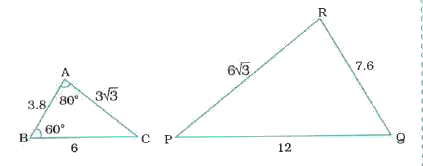
View SolutionIn the given figure `OA*OB= OC*OD`. Show that `/_A= /_C" and "/_B= /_D`.
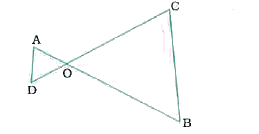
View SolutionA girl of height 90 cm is walking away from the base of a lamp-post at a speed of `1.2m"/"s`. If the lamp is `3.6 m` above the ground, find the length of her shadow after 4 seconds.
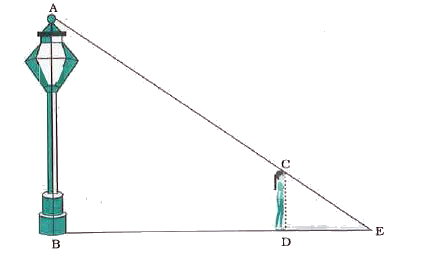
View SolutionIn the given figure, CM and RN are respectively the medians of `DeltaABC` and `DeltaPQR`. If `DeltaABC ~DeltaPQR`, prove that,
`DeltaAMC ~ DeltaPNR`
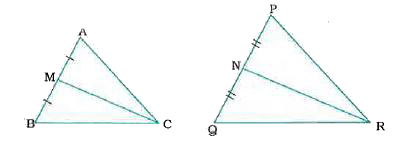
View SolutionIn the given figure, CM and RN are respectively the medians of `DeltaABC` and `DeltaPQR`. If `DeltaABC ~DeltaPQR`, prove that,
`(CM)/(RN)=(AB)/(PQ)`
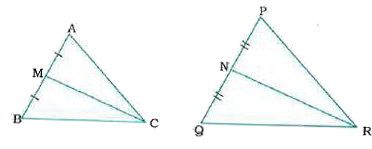
View SolutionIn the given figure, CM and RN are respectively the medians of `DeltaABC` and `DeltaPQR`. If `DeltaABC ~DeltaPQR`, prove that,
`DeltaCMB ~ DeltaRNQ`
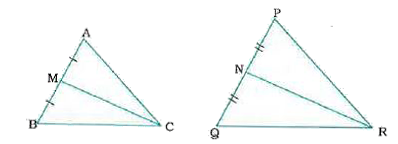
View SolutionIn the given figure, the line segment XY is parallel to side AC of `DeltaABC` and it divides the Deltainto two parts of equal areas. Find the ratio `(AX)/(AB)`.
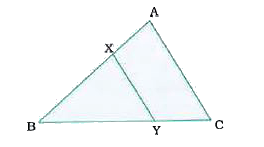
View SolutionIn the given figure, `/_ACB= 90^(@)" and "CD bot AB`. Prove that `(BC^2)/(AC^2)=(BD)/(AD)`.
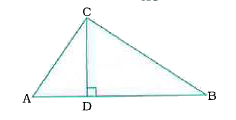
View SolutionA ladder is placed against a wall such that its foot is at a distance of `2.5 cm` from the wall and its top reaches a window 6 m above the ground. Find the length of the ladder.
View SolutionIn the given figure, if `AD bot BC`, prove that `AB^(2)+CD^(2)= BD^(2)+AC^(2)`
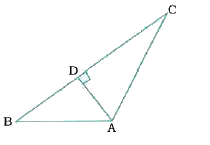
View SolutionBL and CM are medians of a DeltaABC right angled at A. Prove that `4(BL^(2)+CM^(2))= 5 BC^(2)`.
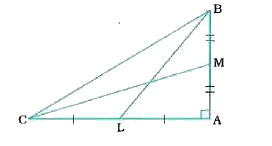
View SolutionO is any point inside a rectangle ABCD (see the given figure). Prove that `OB^(2)+OD^(2)= OA^(2)+OC^(2)`.
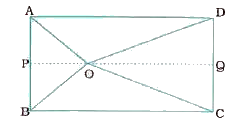
View Solution
TEXTUAL EXAMPLES questions and complete solutions for chapter TRIANGLES of KUMAR PRAKASHAN of Class 10